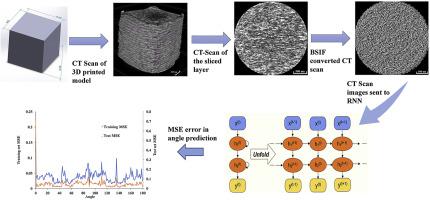当前位置:
X-MOL 学术
›
Compos. Sci. Technol.
›
论文详情
Our official English website, www.x-mol.net, welcomes your
feedback! (Note: you will need to create a separate account there.)
Reverse engineering of additive manufactured composite part by toolpath reconstruction using imaging and machine learning
Composites Science and Technology ( IF 8.3 ) Pub Date : 2020-09-01 , DOI: 10.1016/j.compscitech.2020.108318 Kaushik Yanamandra , Guan Lin Chen , Xianbo Xu , Gary Mac , Nikhil Gupta
Composites Science and Technology ( IF 8.3 ) Pub Date : 2020-09-01 , DOI: 10.1016/j.compscitech.2020.108318 Kaushik Yanamandra , Guan Lin Chen , Xianbo Xu , Gary Mac , Nikhil Gupta

|
Abstract Development of composite material parts requires significant research and development effort. The fiber size, volume fraction and direction are important in determining the properties of the part. Additive manufacturing (AM) methods are increasingly used for printing composite materials. Advancements in 3D scanning and imaging technology have raised a significant concern in reverse engineering of parts made by AM, which may result in counterfeiting and unauthorized production of high quality parts. This work is focused on using imaging methods and machine learning to reverse engineer a composite material part, where not only the geometry is captured but also the tool path of 3D printing is reconstructed using machine learning of microstructure. A dimensional accuracy with only 0.33% difference is achieved for the reverse engineered model.
中文翻译:

使用成像和机器学习通过刀具路径重建对增材制造复合材料零件进行逆向工程
摘要 复合材料零件的开发需要大量的研究和开发工作。纤维尺寸、体积分数和方向对于确定部件的特性很重要。增材制造 (AM) 方法越来越多地用于打印复合材料。3D 扫描和成像技术的进步引起了对 AM 制造零件逆向工程的严重关注,这可能导致高质量零件的伪造和未经授权的生产。这项工作的重点是使用成像方法和机器学习对复合材料部件进行逆向工程,其中不仅可以捕获几何形状,还可以使用微结构的机器学习来重建 3D 打印的工具路径。逆向工程模型的尺寸精度只有 0.33% 的差异。
更新日期:2020-09-01
中文翻译:

使用成像和机器学习通过刀具路径重建对增材制造复合材料零件进行逆向工程
摘要 复合材料零件的开发需要大量的研究和开发工作。纤维尺寸、体积分数和方向对于确定部件的特性很重要。增材制造 (AM) 方法越来越多地用于打印复合材料。3D 扫描和成像技术的进步引起了对 AM 制造零件逆向工程的严重关注,这可能导致高质量零件的伪造和未经授权的生产。这项工作的重点是使用成像方法和机器学习对复合材料部件进行逆向工程,其中不仅可以捕获几何形状,还可以使用微结构的机器学习来重建 3D 打印的工具路径。逆向工程模型的尺寸精度只有 0.33% 的差异。









































 京公网安备 11010802027423号
京公网安备 11010802027423号